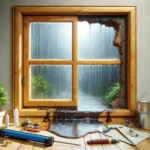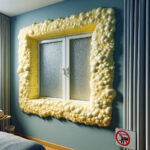Caulking is a technique used to strengthen the tightness of open spaces in a house. The purpose of this operation is to prevent the entry of heat, especially in the summer period. That said, Quebec is experiencing a rather dense summer period. Caulking is therefore a necessity to preserve your home from heat. In this article, we are going to give you some information on the subject.
Caulking your home: what are the basics?
- Have mastery of the concept of phase shift
Taken in the sense of the word, the phase shift is the time it takes for the heat to penetrate the thermal insulation that you would have placed in your home. Thus, it is advisable to adopt the use of products with a period of phase shift ranging from 10 to 12 hours. Indeed, the period of phase shift determines the insulation capacity of your home. Simply put, the longer the period of phase shift, the more heat is repelled. In addition, to reassure you of an effective phase shift, it is more appropriate to use ecological insolents.
- Identify places to caulk
Some places let heat in your home more than others. Given this, you need to make sure to correctly identify these, so as not to leave any room for heat. In the list, we have: the roof of your home, walls, windows,floors and thermal bridges. We also have the old or poorly made bay windows that must also be considered. All these places are therefore likely to affect the comfort of your home. Knowing them in advance means protecting yourself better.
Caulking your home: what are the steps?
Remember the locations to be identified for caulking that were mentioned above. They are the ones who represent the steps that must be taken into account to make the caulking.
- Lost roofs or attics
These two places are the most exposed to the sun. As for the roof, you need to take care of its tightness. This will limit the entry of heat. As for the attic, their isolation is intended to block the hot air that circulates under your roof. The consequence is that you will have a home full of freshness during this quebec summer period. However, the insulation product you are going to use will depend on the type of roof you have. Take that into account.
- The glass walls
They have a habit of letting light and heat through the house. This is well known to all. This is also the reason why some keep their curtains and blinds closed when it’s hot. That said, to avoid being bothered by the heat, install double or triple glazing to block the road from the heat.
- The walls
If you have ever startedle after you are leaning against a wall in the middle of a heat wave, you will understand that they are real vectors of heat. For the caulking of walls, it is therefore advisable to opt for the insulation of walls from the outside and from the inside. So, when it comes to insulation from the outside, you can do it by putting insulation panels directly on the walls or simply by putting an insulating coating. In the case of insulation from the inside, you will only have to lay a counter-partition.
- Soils
As for the floors, the process is almost the same as that of the wall. You can lay insulation on the floor surface, if you have opted for insulation from the inside. If it is insulation from the outside, lay flockings of insulating fibers under your floor.
Protecting your home from heat: which thermal insulation to use?
There are several. However, to choose the most effective ones, you need to choose those that have a low rate of heat conductivity. So you have the choice between:
- Wood wool
This insulation is often used for waterproofing roofs, attics, exterior walls and floors. It has a phase shift capacity of up to 12 hours. In addition, as a good insulator, its thermal conductivity rate is 0.040 W/ms. In summer, this is the choice to make.
- The cellulose otter
It is used to insulate walls and especially floors. Its insulation capacity is estimated at 6 times more than other types of thermal insulation. As for its phase shift duration, it takes 12 to 15 hours before heat penetration.
- Synthetic insulators
These are the insulators composed of polystyrene, polyester, polyurethane. They can just as well do the trick.
- Mineral insulators
This is expanded clay or cellular crystal. These are types of insulation applicable to the walls and roofs of your home.
However, it is not very advisable to use insulators such as polyurethane,polystyrene or polyester foams. They are toxic and can therefore harm your health.
- Thin insulators (silicone seal)
There are different products in this category. They are more effective for doors and windows. However, you will have more clarification on the silicone seal.
The properties of the silicone seal make it ideal to have a well-sealed house. It has a very impressive resistance capacity. It supports any temperature level, and perfectly keeps its tightness and flexibility intact. What’s better, despite the harshness of summer, the silicone seal retains its original size.
Unlike other types of sealants that shrink, this product also competes with other types of sealants,in terms of texture. It can neither solidify nor sag during its use. However, you have a choice. If eventually, you decide to opt for the other types of seals or sealants,take into account all the parameters that are mentioned. They are very decisive in ensuring the protection of your home against heat.
What’s more, don’t forget to turn to Caulking Elite for a professional caulking.



